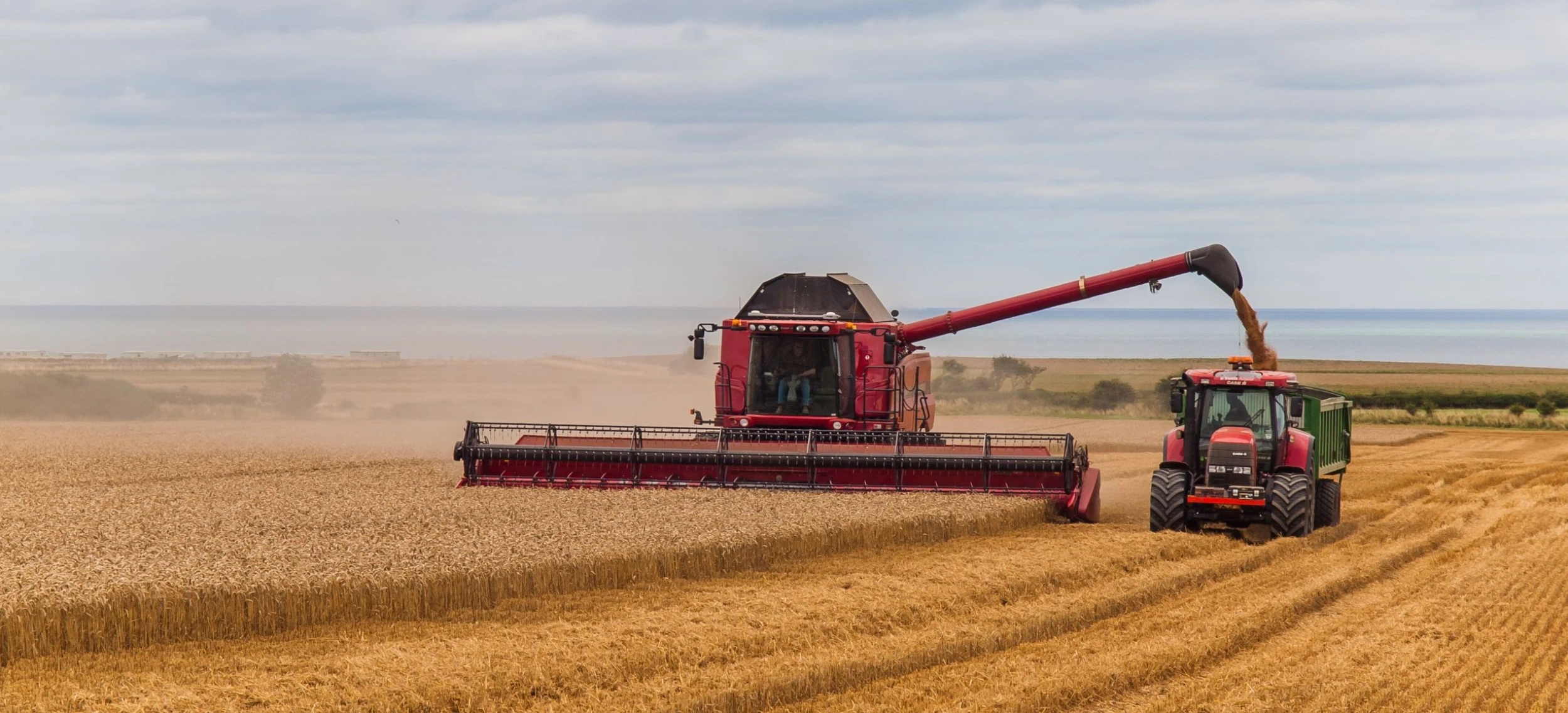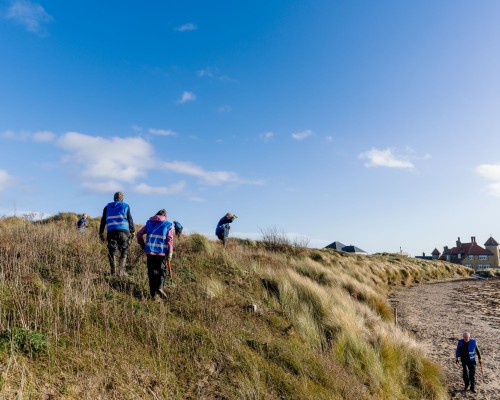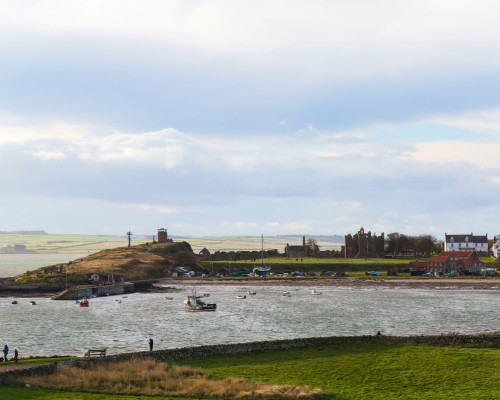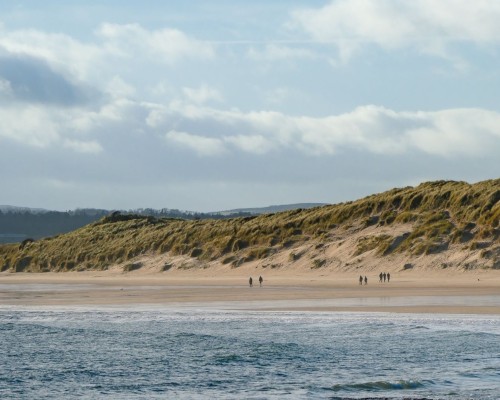Farming and land management
Farming and the management of land for agriculture has shaped this National Landscape over many centuries

Farming and the management of land for agriculture has shaped this National Landscape over many centuries

Farmland is a refuge for a wide variety of wildlife, and the habitats associated with these species are managed by farmers. They include whinstone grassland, meadows, sand dunes and grazing marsh. Many of these habitats are maintained by grazing animals which in turn provide a suitable home for a range of species such as rare plants, pollinating insects, wintering geese and visiting wading birds.
Farmers in the National Landscape are doing what they can to conserve and enhance the nature on their farms. From creating habitats for rare species and recording wildlife through the seasons and over time to maintaining the fields and boundaries, this vital work contributes to the local economy and visual fabric of the area. Without farmers farming the land, the future could look very different.

Farmers and farming practices have contributed to the protected landscape that is seen today
Many farmers and land managers are enrolled in agri-environment schemes which pay them to farm in nature-friendly ways and create new habitats to increase biodiversity. These include planting new woodlands and hedgerows, managing and restoring ponds, rejuvenating grasslands and creating new flower-rich areas. This all adds to value of this protected landscape for wildlife and its natural beauty which is appreciated by locals and visitors.
While there are varied examples of successful projects and collaborations between farmers and nature conservation organisations, there is still much to be done. To address the wider biodiversity crisis, all nature recovery opportunities must be grasped.

Farming in Protected Landscapes (FiPL) is a Defra programme of funding for one-off projects covering the following themes: climate, nature, people and place.
The programme is part of Defra’s Agricultural Transition Plan. It has been developed by Defra with the support of a group of National Landscape and National Park staff from across the country.
The programme started in 2021 and has now been extended to run until March 2026.
A selection of projects funded by FiPL in and on the boundary of the Northumberland Coast National Landscape are shared below.


Farming in Protected Landscapes has enabled the Conservation Team to build several sheds for barn owls in the Northumberland Coast National Landscape, which we continue to monitor with trained and licensed volunteers. These sheds provide barn owls with boxes to nest in and much-needed shelter for the winter months.

This organic farm has received Farming in Protected Landscapes funding for a variety of projects, including restoring the walls of its original kitchen garden and planning a native fruit tree orchard for all to enjoy. Owner Mark Bridgeman shared: “The orchard will be good for biodiversity and wildlife. It’s going to be an orchard with as many native varieties as we can think of, and visitors will be able to come and take their pick. I’ve found FiPL has been great and the team helped steer me through the process.”

Open to the public 364 days a year, this beautiful historic site is located in Chathill. Preston Tower has recently received a grant from Farming in Protected Landscapes to improve accessibility. The FiPL funds were used to develop new clearer information boards, better access and parking, a more accessible path, stronger WiFi signal and website support to reach a wider audience.

This old granary (in a field to the north of Fenham Farm) has an important place in the Northumberland Coast National Landscape’s agricultural history. It dates from 1731, and is located near the King Charles III England Coast Path on the shore of the Lindisfarne National Nature Reserve, overlooking Holy Island. Thanks to a Historic Building Restoration Grant, the granary is currently undergoing extensive restoration using traditional methods and materials. This has been made possible because of Defra-funded programme, Farming in Protected Landscapes. The exciting project means this building's place in the landscape will be preserved for years to come. Plus, biodiversity benefits include hedge planting and nesting and roosting opportunities for birds and bats.

Broxfield Farm has hosted farm experience days for children farm for many years, giving young people the chance to get outside and enjoy nature. Funding from Defra’s Farming in Protected Landscapes Access Grant will enable the farm to expand what it offers to schools. An all-weather tent to use as an outdoor classroom area and a new trackway through the woodland on the farm have recently been completed. This will enhance the experience, make more of the farm accessible, and provide shelter in chilly weather. The farm also has plans to start offering bat watching and dark sky sessions.

A two-phase project links up Longhoughton village with the Northumberland Coast Path.The first phase was the construction of a bridge crossing Howick Burn in spring 2024, enabling a picturesque walk from Longhoughton village through fields and woodland to the Northumberland Coast Path. Phase two of the project was completed recently, with 275m of the path from the bridge to the Northumberland Coast Path now resurfaced. Previously, this section was often waterlogged and improvements include a raised path height and ditches either side.The work was done by local contractors using locally-sourced materials.

The Conservation Team is a volunteer initiative carrying out vital tasks.
Find out more
Discover the traditional villages and lively harbours in the Northumberland Coast National Landscape.
Find out more